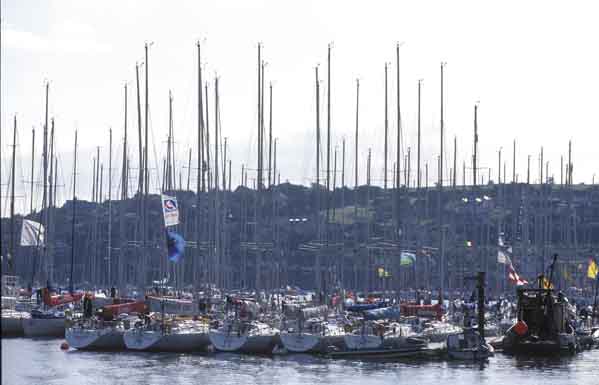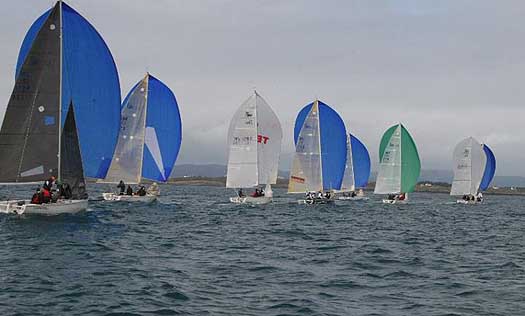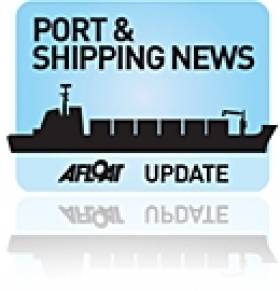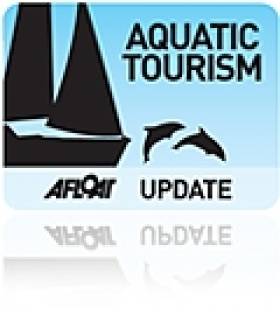Displaying items by tag: Cork
Tributes Paid in Fermoy to Champion of Angling Jack O'Sullivan
#ANGLING - The Corkman has paid tribute to the late Jack O'Sullivan, one of the best known Irishmen in the coarse angling fraternity.
"He is a man who worked hard to put the town of Fermoy, and the stretches of the River Blackwater that enhance it, to the forefront of tourism," the paper writes.
"For 25 years he led from the front, not just by putting Fermoy on the map as a coarse angling destination but also his country, when he brought the likes of the World Coarse Angling Championships to Fermoy in 1968, and many other prestigious events down through the years."
A founder member of the National Coarse Fishing Federation of Ireland (NCFFI), in 2007 O'Sullivan received a gold medal from the organisation for his services to the Fermoy Coarse Angling Association, and angling tourism both local and national.
The Corkman has more on the story HERE.
Report into Death of Crab Fisherman Prompts Call for Review of Stability Standards
#MCIB - The Marine Casualty Investigation Board (MCIB) has recommended a ministerial review of stability standards for fishing vessels following its report into the death of a crab fisherman off Co Cork in January last year.
Gerry Hegarty drowned after a wave struck the crab boat Carraig An Iasc, which was fully loaded with crab pots at the time, causing it to capsize and sending its two-man crew into the water.
Hegarty, who was not wearing a personal flotation device (PFD) or other buoyancy aid, got into difficulty while attempting to swim ashore with his crewmate and skipper James Fitzgerald, who subsequently raised the alarm.
Lifeboats from Ballycotton and Crosshaven, as well as Irish Coast Guard helicopter Rescue 117, were tasked to the incident. Divers from Naval Service vessel LE Emer located the sunken crab boat but no body was found.
A coastguard search of the area continued over a number of days without success. Hegarty's body was eventually recovered on 17 February 2011 at Ringabella Strand in Co Cork.
The MCIB found it probable that the Carraig An Iasc encountered wind or wave action or a combination of both that caused the vessel to heel to an angle beyond which it was able to recover from its loaded condition. The vessel's Code of Practice Declaration of Compliance was valid until 15 July 2013.
The board noted that there have been "a number of incidents caused by overloading boats thus effecting stability", and recommended that the Minister for Transport reviews and revises the stability standards in the current Code of Practice to improve these standards.
It was also recommended that a safety notice be issued to all skippers and owners in the fishing fleet reminding them of their legal responsibility to ensure that all their crew wear PFDs or lifejackets while on deck.
The full report is available to download as a PDF from the MCIB website HERE.
- Crosshaven
- Cork
- Safety
- Fishing
- Ballycotton
- Lifejacket
- Lifeboat
- Marine Casualty Investigation Board
- Coastguard
- Irish Coast Guard
- Skipper
- naval service
- helicopter
- MCIB
- Rescue 117
- personal flotation device
- Minister for Transport
- LE Emer
- standards
- drowned
- crab fishing
- Carraig An Iasc
- Gerry Hegarty
- James Fitzgerald
- PFD
- Ringabella Strand
- Code of Practice
- stability
- overloading
Port of Cork Gets off to a Good Start in 2012
#CORK – January 2012 kicked off to a good start for the Port of Cork with over 76,000 tons of dry bulk animal feeds unloaded in one week, a record for the Port. The high quantity of feed which was unloaded as part cargo from five large bulk carriers, gives a welcome boost to the quantities of dry bulk material handled by the Port of Cork.
In the Republic of Ireland bulk cargoes have seen an increase of 2% across all ports and this growth is a reflection of the growing confidence in the agricultural sector.
Commercial Manager, Captain Michael McCarthy said: "Unloading over 76,000tonnes of dry bulk animal feeds at Ringaskiddy Deep-water Terminal in five days is an excellent boost for the port. It demonstrates the port's capabilities when it comes to handling large ships with efficient and safe turnaround times. Many of the main feed importers are utilising the Port of Cork's deep-water capacity with Panamax vessels arriving fully laden to lighten before proceeding to other Irish or UK Ports"
New Helicopter for Irish Coast Guard is Completed
#COASTGUARD - Sikorsky has completed production of a new S-92 helicopter for the Irish Coast Guard under the rescue service's €500 million deal with CHC Ireland.
The US-based helicopter firm and CHC formalised the purchase on Wednesday (21 December) with Irish Coast Guard director Chris Reynolds during a hand-over ceremony at the S-92 commercial helicopter assembly facility in Coatesville, Pennsylvania.
Equipped for dedicated search and rescue (SAR) operations, the helicopter will provide coverage for deep Atlantic Ocean missions, service Ireland's offshore islands and provide rescue cover on the west coast from Cork to Galway.
The new aircraft will be based at Shannon and will replace the current coastguard SAR helicopter, a Sikorsky S-61, which has given 20 years of unbroken service.
According to Sikorsky, the S-92 is equipped with advanced systems and hardware, including an automated flight control system that enables the pilot to fly pre-programmed search patterns and perform delicate hover manoeuvres; a wireless intercom allowing a rescue swimmer to communicate with the crew; radio transceivers to communicate with ships and rescue services; a weather radar and infrared sensor; and a digital video system to record rescues.
Reynolds said the new helicopter - which joins four second-hand machines on a 10-year lease - represents a stepped improvement in Ireland's ability to care for and service its seagoing, coastal and island communities.
"I am very happy that the Coast Guard will operate what I consider to be the leading SAR helicopter in the world," he added.
As reported earlier this year on Afloat.ie, the new chopper is part of a deal that raised questions from a Fine Gael TD over allegations that a competing tender did not have a "good reputation".
Fergus O'Dowd questioning the contract with CHC Ireland after receiving documents in which Chris Reynolds said the Air Corps – whose helicopters are supplied by AgustaWestland - were uneqipped for the role and that no cost saving would be made if they took on the service.
Cork Week 2012 Launches New Website
#CORKWEEK – Preparations for Cork Week 2012, one of the biggest and most succesful of Ireland's sailing regattas is well underway and this week the Royal Cork Yacht Club has launched a dedicated Cork Week 2012 website.
The event Chairman, Pat Lyons is keen to welcome all participants to the event.
"Once again, Cork Week will strive to keep down costs for all competitors, right across the board, we realise the importance of this in the current climate. However, we will make sure that the event is a memorable occasion. Next year's event will stage the Cork Week Festival, which will be a celebration of Cork's cultural heritage. Cork has a vibrant and artistic community and the festival will showcase that. We want to make Cork Week a unique experience and this will be expressed through performing arts, local cuisine and exhibitions of the history of the region. You will find bouncy castles and face painting at many events but Cork Week will provide far more than that."
Early expressions of interest have been very promising; a substantial big boat fleet is expected, including several that had a thrilling regatta in 2010. Many of the entries for the 2012 Brewin Dolphin Commodores' Cup are also expected, including some of the best overseas yachts from Europe and further afield, including a strong team from Hong Kong.

Storm - a J109 favourite for Cork Week 2012 - Photo: Bob Bateman
The J/109 Irish National Championship will take place during Cork Week with 20 or more yachts expected from Ireland and overseas. Favourites for the national title include Pat Kelly's Storm, Irish IRC Boat of the Year and Glenn Cahill's Joie de Vivre. Paul Heys of J Boats also reports that the new J/111 class will also be well represented with at least six of the new breed debuting in their first major European Regatta.

Crosshaven, the venue, as always, for Cork Week 2012 - Photo: Bob Bateman
For the smaller IRC boats, the fleet is set to be just as competitive, the variety of sailing conditions and courses is a great all round test of the yacht and the crew and the yachts in IRC Two and Three make up a substantial percentage of the sailors racing at Cork Week. The committee hopes that the reduction in costs right across the board should be of great benefit to those boats in particular.

Visitors berthed in Crosshaven for the 2011 event. Photo: Bob Bateman
The 1720 Class has been having a renaissance in Ireland and a large fleet of the exciting yachts is expected. Purpose built for the Cork Week courses, there are 26 1720s in Cork alone and others are expected from abroad. Charter opportunities are available.

1720s comepting at this year's European Championships in Baltimore
It has also been decided to allow professional sailors to race at Cork Week in any of the classes, as Racing Chairman, Anthony O'Leary explains.
"We don't want to prevent anybody from coming to Cork Week and we have decided to take away any of the barriers to people who want to come and enjoy some wonderful racing. Competitors can expect a variety of courses set in open water, coastal and in the harbour, which should test the crew handling and get just about every sail out of the bag. We are blessed with some superb sailing grounds and we are intent on making full use of them. The focus for Cork Week is the same as it has always been, great sailing and a fabulous atmosphere ashore."
The management team is also keen to encourage participation by charter companies and corporate entries and plans are in place to offer assistance to ensure that Cork Week is a fun-filled regatta for all.
Trade Freight Volumes Through Seaports Still Down 9% on 2007
#SHIPPING – The Irish Exporters Association launched its Trade and Transport Analysis 2011 today (13th Dec) in Cork and its findings confirmed that 2010 was a story of recovery after two straight years of decline in 2008 and 2009. Importantly, the recovery trend has not continued into 2011, and exporters fear that shipping lines may not be able to continue the service levels they need to meet new market requirements.
Speaking at the launch of the Trade and Transport Analysis 2011 at the Port of Cork, Mr John Whelan, Chief Executive at the Irish Exporters Association, said that the analysis shows;
• export volumes have now returned to the pre –recession levels
• but import volumes are still 12.9% below 2007 levels. The analysis further shows that airfreight imports are down by 36% indicating a dramatic loss in high value luxury imports, whereas sea-freight imports are down by over 9%, reflecting the depressed domestic economy.
Mr Brendan Keating, Chief Executive Officer at the Port of Cork, welcoming exporters to the launch event stated; ''A 9% increase in exports are expected through the Port of Cork during 2011, which is very positive for the region.''
He went on to say the Port of Cork is committed to supporting the growth of international trade and meeting the needs of exporters and importers of goods , particularly from the distant but rapidly growing Asian and South American markets . He also pointed to the Ports commitment by sponsoring the Deep Sea Shipping Award with the Irish Exporters Association. He concluded by saying; "The Port of Cork is happy to be associated with the Irish Exporters Association in producing the Trade and Transport Analysis 2011."
"The growth in exports volumes to pre –recession levels reflects the rapid' V ' shaped bounce back by the export sector which was achieved despite the depressed international economic environment," said Mr Whelan. However, he went on to say, the continued low volume of imports is inevitably putting huge strain on the shipping lines and airfreight lines servicing the country. "Exporters are concerned that the continued loss of volumes will lead to a deterioration of competitive services from shipping lines and haulage contractors, less revenue for ports and ultimately higher transport costs for our manufacturing export sector."
He further stated; "Major job losses in manufacturing industry will accelerate unless a new integrated transport strategy is put in place to enable Irish exporters to effectively transport key imports from the major Asian supply industries into Ireland and manufacture and distribute exports into Europe and America as well as back to Asia."
John Whelan then said; "In this context exporters find it befalling that in the recent Budget that added costs were put onto the transport sector without making allowances for the export sector . Once again we are asking the Minister for Transport Leo Varadkar T.D. to introduce a Special Diesel User Rebate to support transport and export industry to ensure we have a level playing field in Europe with competitors from other EU member states who enjoy this kind of support from their governments."
The publication launched today, sponsored by the Port of Cork, looks in detail at all of the various modes of transport that are currently used to export and to import. The publication also looks at the risk factors to Irish trade which need to be addressed as a matter of urgency. High up on that list is the lack of regular air freight routes into and out of Ireland which accounts for 37% by value of all exports or almost €33 billion were carried by air in 2010. However, this may not be the full picture because the CSO figures only indicate the mode of transport used to move the goods across the border of the Irish state and does not take into account which mode of transport is used after that point. It therefore seems likely that the figures for air freight quoted above may in fact not reflect the total potential airfreight value as it is likely that a proportion of air freight is leaving Ireland by other modes in order to be air freighted from hubs in the UK or continental Europe to their final destination.
Mr Whelan concluded by saying that Ireland must continue to reinforce its existing strengths as one of the most open and globalized economies in the world (currently ranked Number Two on the Ernst & Young Globalization Index). "We must build on our progress so far by effectively resolving our transport challenges in an imaginative way and with a strong sense of urgency and determination."
Cork The Place to Be For a Holiday On The Sea
#TOURISM - Winter might be upon us, but it's a great time to plan a new year holiday in Ireland on the sea, according to the UK's Daily Echo.
From night-time paddling in with renowned kayaking instructor Jim Kennedy, to snorkelling in Baltimore, relaxing in Skibbereen and and fresh seafood lunches in Kinsale, a vacation in Cork can appeal to any taste.
Whale and dolphin watching is a big draw for the region, too, as Ireland's coast – the first cetacean sanctuary in Europe - plays host to a growing variety of species.
The summer feeding grounds off the southern coast are particularly busy, and tourist boats are often treated to whales breaching the surface and surrounded by dolphins putting on a show.
The Daily Echo has more on the story HERE.
UCC Wave Energy Trials Central to New Maritime Cluster
#POWER FROM THE SEA - A €9 million Europe-wide wave energy trial programme is one of the key elements of a new Government programme designed to transform Ireland as a maritime nation.
According to The Irish Times, University College Cork's Hydraulics and Maritime Research Centre will run testing of wave energy, tidal energy and offshore wind energy devices across a network of sites in 12 European countries participating in the new marine renewables infrastructure network Marinet.
Irish test sites in the network include the national ocean test facility in Cork and centres operated by the Sustainable Energy Authority of Ireland (SEAI) at Galway Bay and Belmullet.
The UCC centre also forms part of the new Irish Maritime and Energy Resource Cluster (IMERC), launched last Friday by Taoiseach Enda Kenny.
The cluster comprises UCC, the Irish Naval Service, Cork Institute of Technology and the National Maritime College of Ireland with the initial aim of creating 70 new research jobs by 2014 in the areas of wave energy, green shipping and sustainability of ocean resources.
IMERC director Dr Val Cummins said: “The aim of IMERC is to promote Ireland as a world-renowned research and development location that will unlock Ireland’s maritime and energy potential."
The Irish Times has more on the story HERE.
- Irish Naval Service
- maritime
- Cork
- Galway Bay
- Belmullet
- National Maritime College of Ireland
- wind energy
- UCC
- Cork Institute of Technology
- renewable energy
- wave energy
- sustainable energy
- tidal energy
- network
- testing
- Sustainable Energy Authority of Ireland
- Taoiseach Enda Kenny
- SEAI
- Hydraulics and Maritime Research Centre
- Marinet
- devices
- Irish Maritime and Energy Resource Cluster
- IMERC
- Dr Val Cummins
Royal Cork Launch New Club Wine
#Wine–Royal Cork Yacht Club has taken delivery of its own "Royal Cork Private Reserve" wine. It's described as 'a fine quality Bordeaux red wine with an exclusive "Royal Cork" label'. To celebrate its launch, diners at tomorrow's Goose dinner will receive a complimentary glass with their meal. Members can buy gift boxed bottles of the new wine from next week.

The new Royal Cork wine label
Search for Missing Cork Man Set to Resume
#NEWS UPDATE - The search was set to resume this morning for a missing man feared drowned in Cork city, the Irish Examiner reports.
Search efforts were mounted last night after the man's family notified gardaí. The man, believed to be in his 60s, is thought to have disappeared from Ballincollig Regional Park in the west of the city, where his car and phone were found.
Waterford's Irish Coast Guard helicopter joined the search along with gardaí and the Crosshaven coastguard, concentrating on the River Lee where water levels were high due to heavy rain.






































































